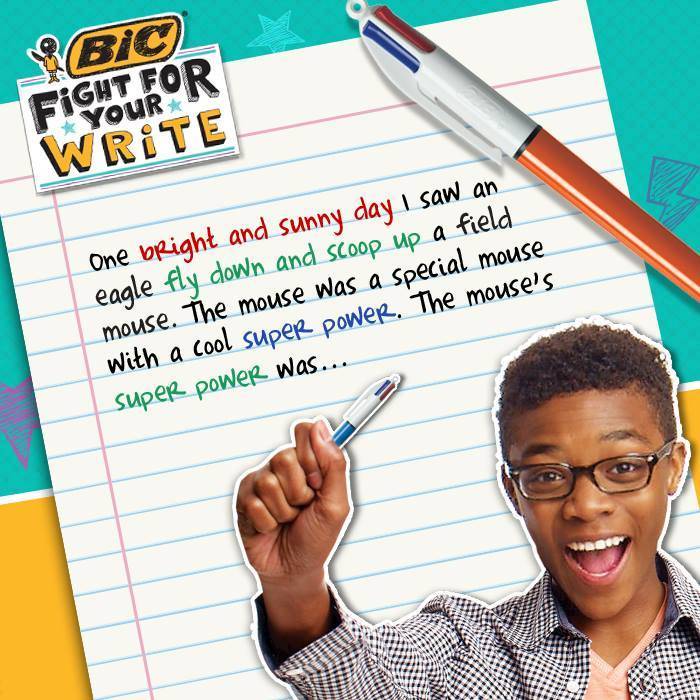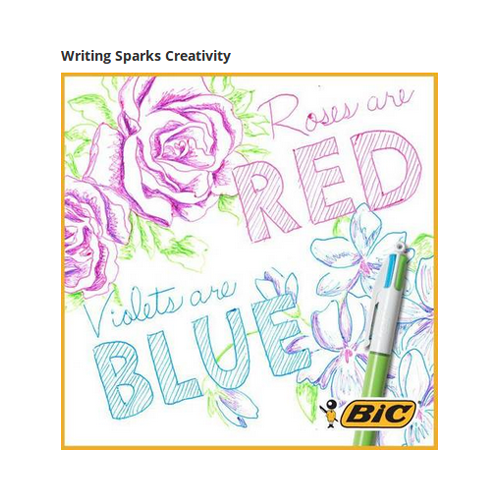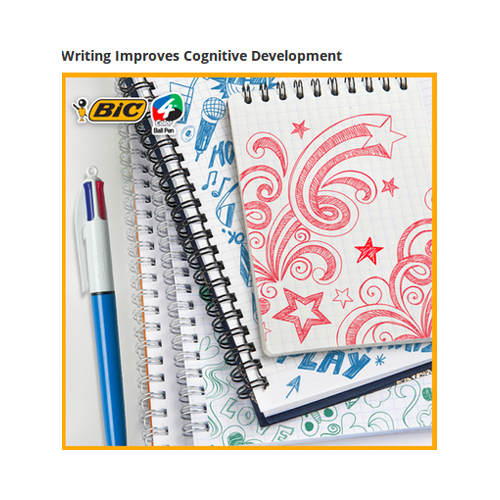BIC 4 Color Pen Writing Activity

Complete the short story with some colorful writing of your own
Tips to Inspire Your Kids to Write:
- Set aside specific times during the week for writing stories, songs or even jokes. Let your kids use their imaginations.
- Have an assortment of colorful pens, pencils and markers on hand that will make kids want to spend more time writing.
- Make writing special for kids with their own personal table, desk, or designated area. Get them excited about their own writing space.
- Give kids a fun assignment that requires them to write. Make a birthday wish list or write a letter to someone famous.
- Make up games around writing. Practice signing their autograph to give to mom or dad.

- Lanyard hole so your 4-Color pen is there when you need it. Attach to your favorite lanyard and wear it around your neck or clip it to your back pack, clipboard, planner or journal.
- Four color convenience in one pen.
- Refillable
Fight for your Write with BIC

According to an expert in educational psychology from the University of Washington, handwriting instruction benefits students' cognitive development as well as motor functioning. For example, some of the motor and cognitive tasks associated with handwriting are the following: ideation, text production, punctuation, planning, spelling, grammar.
Source: Hanover Research (2012). The Importance of Teaching Handwriting in the 21st Century. Washington, DC: Hanover Research

"Studies show that children who write frequently, both at school and at home, feel more confident in their writing abilities. This confidence translates into success in all academic subjects and in nonacademic environments as well."
– Pam Allyn, Your Child’s Writing Life and "Prepare My Child for School: Early Childhood Education," and U.S. Department of Education.

"Studies show that children who write frequently, both at school and at home, feel more confident in their writing abilities. This confidence translates into success in all academic subjects and in nonacademic environments as well."
– Pam Allyn, "Your Child’s Writing Life" and "Prepare My Child for School: Early Childhood Education," and U.S. Department of Education.

Handwriting builds a solid foundation for school success. Research shows that handwriting is a foundational skill that can influence student’s reading, writing, language use, and critical thinking.